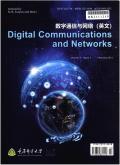Cross-Layer Analysis of Error Control in Wireless Sensor Networks
IF 7.5
引用次数: 83
Abstract
Severe energy constraints and hence the low power communication requirements amplify the significance of the energy efficient and preferably cross-layer error control mechanisms in wireless sensor networks (WSN). In this paper, a cross-layer methodology for the analysis of error control schemes in WSNs is presented such that the effects of multi-hop routing and the broadcast nature of the wireless channel are investigated. More specifically, the cross-layer effects of routing, medium access and physical layers are considered. This analysis enables a comprehensive comparison of forward error correction (FEC) and automatic repeat request (ARQ) in WSNs. FEC schemes improve the error resiliency compared to ARQ. In a multi-hop network, this improvement can be exploited by reducing the transmit power (transmit power control) or by constructing longer hops (hop length extension), which can be achieved through channel-aware routing protocols. The results of our analysis reveal that for certain FEC codes, the hop length extension decreases both the energy consumption and the end-to-end latency subject to a target PER compared to ARQ. Thus, FEC codes can be regarded as an important candidate for delay sensitive traffic in WSNs. On the other hand, transmit power control results in significant savings in energy consumption at the cost of increased latency. Moreover, the cases where ARQ outperforms FEC codes are indicated for various end-to-end distance and target PER values无线传感器网络误差控制的跨层分析
在无线传感器网络(WSN)中,严重的能量限制和低功耗通信要求放大了节能和优选的跨层误差控制机制的重要性。本文提出了一种用于分析无线传感器网络中的误差控制方案的跨层方法,从而研究了多跳路由的影响和无线信道的广播性质。更具体地说,考虑了路由、介质访问和物理层的跨层效应。该分析能够对wsn中的前向纠错(FEC)和自动重复请求(ARQ)进行全面的比较。与ARQ相比,FEC方案提高了容错性。在多跳网络中,这种改进可以通过降低发射功率(发射功率控制)或构建更长的跳(跳长度扩展)来实现,这可以通过通道感知路由协议来实现。我们的分析结果表明,对于某些FEC码,与ARQ相比,跳长扩展降低了目标PER的能量消耗和端到端延迟。因此,FEC码可以作为WSNs中延迟敏感业务的重要候选码。另一方面,传输功率控制可以显著节省能耗,但代价是增加延迟。此外,针对不同的端到端距离和目标PER值,指出了ARQ优于FEC代码的情况
本文章由计算机程序翻译,如有差异,请以英文原文为准。
求助全文
约1分钟内获得全文
求助全文

 求助内容:
求助内容: 应助结果提醒方式:
应助结果提醒方式:


